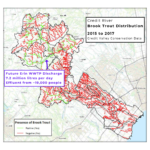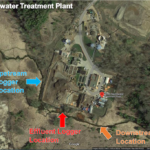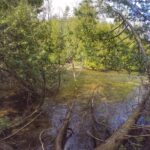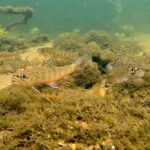WHY CAN'T SPECIFIC TEMPERATURES BE USED IN ONTARIO?
Ontario’s Water Quality Objectives, which set water temperature objectives for lakes and rivers that receive effluent are OUT OF DATE and INEFFECTIVE. Currently, effluent discharged from industrial or municipal sewage facilities is ONLY held to a qualitative standard:
“The natural thermal regime of any body of water shall not be altered so as to impair the quality of the natural environment.”1
To prove impairment is extremely complicated and requires rigorous, scientific studies. A large body of scientific research is available that describes the optimal water temperature conditions to maintain healthy fish populations.
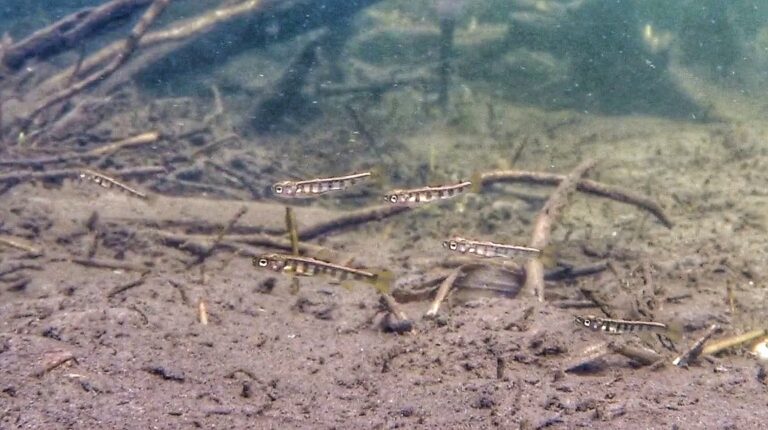
Brook Trout fry in the West Credit River photographed downstream of the outfall location of the proposed Erin Wastewater Treatment. Coldwater fish species have different temperature tolerances for various stages of life.
Other jurisdictions across North America protect cold water species with a combination of:
- Absolute temperature objectives based on fish life stages
- Adjustment for ambient conditions
| Idaho2 | Bull Trout criteria for various rivers - typically 13 °C If upstream temperature is above the criteria the effluent can only raise the receiving water by 0.3 °C |
| Nevada3,4 | Brook Trout specific criteria |
| Colarado5 | Brook Trout specific criteria |
| Oregon6 | General criteria of 18 °C Effluent can only raise downstream temperature by only 0.3 °C |
| Washington7 | River specific criteria, typically 20°C and 21°C Effluent can only raise downstream temperature by only 0.3 °C |
| Wisconsin8 | Specific criteria by month for coldwater ecosystems |
British Columbia (BC) developed temperature guidelines OVER 20 YEARS AGO that are used to “protect the most sensitive designated water use in a particular body of water.” 9
BC sets effluent temperature limits for individual fish species, including Brook Trout, with an allowance of only 1°C beyond specified life stage optimums:
| Life Stage Optimum Temperatures for Brook Trout from BC Water Quality Guidelines | ||
|---|---|---|
| Incubation | Rearing | Spawning |
| 1.5 - 9.0 °C | 12.0 - 18.0 °C | 7.1 - 12.8 °C |
WHY CAN’T SPECIFIC TEMPERATUES BE USED IN ONTARIO?
1 – Ontario Provincial Water Quality Objectives – Section 7 – Temperature
2 – IDAPA 58.01.02 – Idaho Water Quality Standards
3 – Guidance for Developing Temperature Criteria for Nevada Waters March 2018
5 – Colorado Regulation No. 31 – The Basic Standards and Methodologies for Surface Water
6 – Division 41 Water Quality Standards: Beneficial Uses, Policies, and Criteria for Oregon
7 – Water Quality Standards for Surface Waters of the State of Washington
